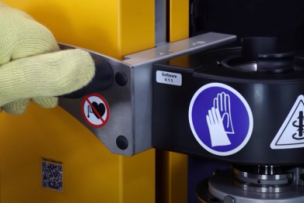Time is of the essence in today’s highly competitive manufacturing world. What can you do to save time before, during and after machining? Here are several methods and approaches that can help.
Why care about time when machining parts? As the cliché goes, time is money. With today’s multiaxis and 5-axis CNC machines in manufacturing, there is plenty of opportunity to optimize time for machine shops of all sizes. But before diving into the practical details, let’s take a step back and look at what needs to be done before machine commands are programmed and prior to making chips fly off a piece of titanium or stainless steel.
“It’s important to know how much time and whose time,” writes CNC Cookshop in its blog series on CNC productivity. “Ultimately, you probably want to understand the time impact for people and machines—both are scarce resources that have to be scheduled. It costs more to have too many with people or machines idle or too few where you’re unable to process as much work as you otherwise could.”
Tip 1: Start at the Macro Level: Adopt Lean Manufacturing Practices
So much of lean manufacturing methodology is focused on eliminating waste. At its core, lean manufacturing is about optimization. It’s about improving a process or making a quality part in less time than you do it today. It is not by simply working faster, says lean manufacturing expert Jamie Flinchbaugh, because working faster can lead to errors. Manufacturing work can be improved by performing efforts in parallel, eliminating handoffs and rework—and expelling some process steps altogether.
“Technology is often a solution here, whether it is buying faster equipment in manufacturing or developing software tools for the office,” writes Flinchbaugh for Industry Week.

.jpg?itok=Q0VzJwqL)



Talk to Us!
I found it interesting when you explained that CNC machines are designed to be very efficient and work very fast. If I were to guess, these machines probably have a lot of small components that need to be replaced on a regular basis. Replacing small parts is probably a lot cheaper than replacing an entire unit. http://hptprecision.com/custom-spindles/
49Dear sir,
Please tell me how to cost saving & productivity increased in tool room VMC department
54Hi there Sunil,
With no specific material specification or application information, it would be difficult to pinpoint cost savings. Some of the following basic suggestions may help you begin the process of realizing a cost savings and help us help you with any specific issues that we may work on together.
1). If you’re still using the same tools of even five years ago, we can help with many opportunities to upgrade to more efficient tooling, yielding a longer tool life, better finish, faster run times, etc.
2). Simplify or reduce activities that do not add value to your company, such as reducing your tooling sources. Do you really need to buy from 30 cutting tool, safety, & janitorial providers?
3). Keep a decent inventory on hand so that you can minimize down time. Think about getting vending equipment to better track & stock items that you use continuously and avoid handling inventory for those that you don’t.
Perhaps bringing in an MSC representative to review & discuss your systems & processes would help to start you on the road to measurable cost savings and reduction of burden time. Please visit our main site to explore our solutions opportunities: https://www.mscdirect.com/
We hope some of that helps. Thank You for commenting on Better MRO!
49It was interesting to learn about how more machines are made to work faster and keeping them busy so that they make more and calculate cycle time in. I can understand how a business could really benefit from keeping their machines taken care of so that they can work a lot better and make more products. Getting some help from a professional could be really useful to maintain and choose the right machines. http://www.mgmplastics.com/cnc-routing
58It's great that you explained that there is plenty of opportunities to optimize time in machine shops that use CNC machines. I would think that it would be important to make sure that your employees are properly trained on how to use CNC machines if you own a manufacturing business. I'm sure there are some businesses out there that offer courses that people can take so that they can learn how CNC machines work.
47I liked what you said about how machines can have some better production and keeping some better chips and they can have more information to collect data and be more accurate. I can see how a business could be really useful for a business to ensure that they can work a lot harder and be more precise. It could be really useful for them to get some help from a professional and allow them to be more productive with better chips. https://www.robinsonengineering.com.au/services
67This is such an attractive article about the things which you should know regarding the 4 tips for machine efficiency.This is one of the best write up. You will get all the information about the topic in this article. I am sure many people will come to read this in future.
cnc machining china
49Thanks for the valuable tips, these help to easily improve the efficiency of the whole manufacturing process. You can also try to avoid unnecessary CNC tool wear and inefficient coolant usage.
47Sir, how to reduce cycle time in vmc machine.
And also how to increase efficiency?
Which drill is best instead of U drill to reduce the cycle time
64Leave a reply
Your email address will not be published. Required fields are marked *